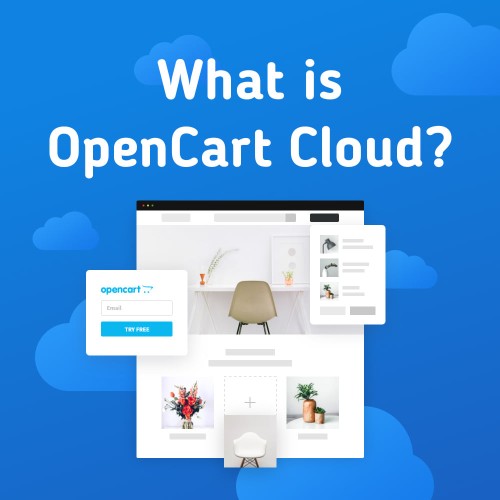The idea of rebranding your online store may seem daunting because it requires money, time, and effort. But it's a process that helps you stay relevant, keep your competitors on their toes, and better reach your desired customers.
So if you’re feeling inspired to learn more about rebranding your eCommerce store and how it’s done, you’ve come to the right place.
In this guide, we’ll dive into the rebranding process, when’s the right time to rebrand, and how you can plan a rebranding strategy for your online store.
What is rebranding?
Rebranding is like giving your business a fresh start. It means changing how people perceive your brand and what it stands for.
According to HubSpot, you can perform a full rebrand which includes changes to your market, your purpose, and your visual identity.
Meanwhile, you can think of a partial rebrand as a touch-up, while a full rebrand is more like a brand makeover.
Large corporations usually do it when their business has grown so much that their current image and way of doing things don't quite fit anymore or when businesses stop being relevant to their target audience.
This is a vital process because it helps create a stronger link between your brand's products, identity, and target consumers.
Why is rebranding so important?
Oftentimes, entrepreneurs enthusiastically jump into the world of eCommerce, believing their skills alone can make a difference. However, in all the excitement, they often overlook the importance of having a long-term plan for their business.
Due to their limited experience, they struggle to determine the true value they offer and to whom.
On top of that, eCommerce platform trends are changing rapidly. Due to the constantly evolving landscape, it’s challenging to keep up with market trends and align your current approach to meet these demands. That's where rebranding comes in to save your business.
A successful rebrand allows you to position your brand in the market, gain a clear understanding of your target audiences, and spruce up your product offerings. That way you can hone in on your business strategy and build robust marketing materials that truly resonate with your customers.
In other words, rebranding provides the necessary direction and clarity to set your business on the right path to long-term success.
How to know when it’s time to rebrand?
We’ve established that rebranding gives your eCommerce store a direction to realign your brand with the proper target market. But that doesn’t mean you jump right into it.
Why? It takes some planning to pull it off (despite Elon Musk’s overnight charge to change Twitter’s well-known blue bird to a black and white “X”).
So, the first step is to take a step back and assess if it’s the right time for your business to rebrand. Here are a few common reasons for rebranding:
Your target audience has evolved, or you want to appeal to a new demographic.
Your brand feels outdated, or it fails to represent your business.
There’s a need for a fresh start to match changing trends.
There’s been a decline in sales or market share loss.
There was a merger, or you acquired another brand.
You pivoted your business or changed the direction.
You’re struggling to stand out from the competition.
You’ve outgrown your current brand.
All of these factors could call for a rebrand for renewed excitement. Now that you know when it’s time to rebrand your eCommerce store, let’s see how you can go about that process.
How to create a rebranding strategy for your eCommerce store
Rebranding is expensive and time consuming. So you need to put a strategy in place to make your eCommerce store rebranding a success and to reach your goals.
Above everything else, make sure your brand messaging is consistent throughout the entire store. From the first interaction with your website to the packaging of your products, it’s all part of the rebranding strategy. The small details matter. Let’s take a closer look.
Define your brand identity
Start by clearly defining your brand's values, mission, and unique selling proposition. This step is crucial to understanding the essence of your eCommerce store and the message you want to convey to your target audience.
To better grasp the concept, you can take inspiration from the rebranding efforts of Clean Origin by Joyce Chen in 2022. This brand offers exclusively lab-grown diamonds for fine jewelry. The goal of its rebrand was to highlight its commitment to sustainability and ethical practices to better resonate with its environmentally conscious customers.
The whole rebranding was a great way to reconnect with the audience in a more socially conscious way and to highlight the true mission and values behind Clean Origin’s lab-grown diamonds: a more eco-friendly alternative to fine jewelry without sacrificing quality.
To successfully pull off your own rebranding efforts, follow Clean Origin’s lead to identify the core elements that differentiate your brand and make sure they're front and center in your rebranding strategy.
Research and understand your target audience
Once you have your new brand identity down pat, it’s time to conduct thorough research to understand your target audience's preferences, needs, and aspirations. Along with that, identify the demographics, behaviors, and motivations of your customer base.
To do this, tap into your CRM, Google Search Console, and other social listening tools like Sprout Social.
Armed with this knowledge, it'll help guide your rebranding journey, guaranteeing that the new brand elements align with your audience's desires and expectations. As the saying goes, measure twice and cut once.
With Clean Origin's rebranding example mentioned above, we can see how their strategy focused on elevated storytelling, soft earth tones, and beautiful lifestyle imagery to convey their commitment to the earth and connect emotionally with their audience.
To understand their audience, they prioritized social listening tactics to learn that the marriage proposal plays a significant role in the motivations and aspirations of their clients. That’s why Clean Origin added consultation services on how to care for and protect their lab-grown diamonds and which engagement ring insurance might be the best for new customers.
A 2022 Jewelry and Engagement Study by The Knot revealed that the average price of an engagement ring is $6,000. That's not a drop in the bucket. It’s a piece of jewelry customers want to protect, for both financial and sentimental value.
The above example tells us how important it is to understand your target audience and incorporate those elements into your rebrand. In other words, the customer holds the answers to all of your branding needs. Listen to what they want and deliver value where it’s needed most.
Refresh your logo
While updating a logo, or changing the color palette of your brand may not include all the elements for rebranding, they still they do play a huge role in giving your business a fresh start.
When you’re tweaking, changing, or refreshing your logo, make sure it resonates with your audience and is on-brand, too. A bright pink, eye-catching logo might not make sense for a men’s cologne brand. But it might be the perfect idea for a kids toy brand.
If you need inspiration, take a look at the example of Instagram's logo alteration following its acquisition by Facebook. The updated logo preserved the polaroid image (to show it was still a photo-sharing app) but infused it with a more digital essence, perfectly encapsulating Instagram's vision for its future offerings.
Pick the right color scheme and typography
Color psychology plays a significant role in how consumers perceive and interact with your brand. So think twice before you pick a main color for your rebranding efforts. Keep it consistent with your brand's personality and appeals to your target customers.
After choosing your main color, select other colors that go well with it. These complementary colors should look good together among the other visual elements in your website design.
Keep accessibility in mind, and go with color palettes that are high in contrast with fonts that are legible.
Accessibility is important to include people with disabilities in your target audience, and also to ensure you follow regulations such as the ADA's Web Content Accessibility Guidelines (WCAG).
Regarding typography (the way your text looks), go for fonts that match your brand's personality and are easy to read. It's a good idea to use two fonts that work nicely together.
You can use one font for headings and another for the main text. This will give your store a consistent and memorable look.
Once again: choose legible fonts and don’t make the text size too small.
See how OpenCart has kept a high contrast color in the background with a low contrast color text on it. Also, the fonts are completely legible, giving the site a good user experience (UX).
Update website design for user experience
You don’t just want to change the colors, fonts, and logo. But also master the web design, keeping user experience (for both mobile and desktop) in mind.
Here are some numbers by Startup Bonsai to shed light on why the user-experience is oh-so important for your online store:
A bad experience leads to 88% of online consumers being less inclined to revisit a site.
If a website takes more than three seconds to load, 53% of mobile users will abandon their visit.
The overall aesthetics of a site influence the perception of credibility for 75% of its visitors.
Even if consumers love a brand, 32% of surveyed individuals would willingly abandon it after just one bad experience.
So, while giving your brand a makeover, spend the most time on making it great for users because they likely won’t come back after a bad experience.
Need inspiration to make the most of your website’s new look? Take a page out of Olipop’s book for an attractive (and interactive) web design:
Consider your store’s vision and mission
When rebranding, it's important to consider your whole business, not just your products or services. Why? You’re transforming the whole brand, and not just parts of it.
So don’t forget the main reason you started your store in the first place. Keep your mission, vision, values, and aesthetics at the core of everything that you do.
We can learn how to take brand as a whole from the example of House of Joppa, a modern Catholic home décor company. They chose their name because "Joppa" means "beautiful." This reflects the company's mission to create tasteful modern Catholic home décor.
House of Joppa maintains a modern aesthetic in their online store without sacrificing the beauty of their faith.
Follow House of Joppa’s lead by taking a holistic approach to your rebranding strategy. That way, you’ll guarantee that your new branding remains consistent with your overall identity and values that you worked so hard to build.
Communicate the product offerings
As much as a rebranding strategy is about improving how customers perceive you, don’t let your products get lost in the shuffle. After all, those are your money makers. You need to sell products to keep your business afloat.
So when implementing a rebranding strategy for your eCommerce store, it's crucial to highlight your product offerings. Put them up in the spotlights. Clearly tell your target audience what you’re offering to them and what value you bring to the table.
For example, in men's fashion, tailored pants play a significant role in showcasing style and sophistication. To elevate your brand's image, consider incorporating a collection of handcrafted tailored pants for men.
Doing so will help you enhance your brand's reputation for delivering exceptional quality and stylish attire.
This is exactly how you demonstrate your offerings while giving the brand a makeover.
Include virtual business cards in your marketing materials
An effective way to enhance your rebranding efforts is by using virtual business cards. These innovative cards are a modern and eco-friendly alternative to traditional paper business cards.
You can showcase your new brand identity, including updated logos and brand colors, to potential customers and business partners.
The convenience of digital sharing by embracing virtual business cards in your rebranding strategy won't only enhance your eCommerce store's image but also demonstrate your commitment to sustainability and technological innovation.
Since they’re digital, you can include a business card with every email you send as part of your signature. Include them in newsletters, special offers, and other professional communications. Another bonus - you’ll never run out!
Get feedback
After rolling out your rebranding strategy for your eCommerce store, it's important to gather feedback to understand how customers perceive the changes. Create surveys and questionnaires to collect opinions on various aspects like design, messaging, and usability.
Use social media to make noise about the rebranding and ask for feedback. You can even lean on customer support and reach out to loyal customers directly for their thoughts.
Don’t forget to check website analytics and conduct A/B testing to measure the impact. You can gather data from authentication methods even, like SAML or OAuth, to get user information.
If you want even more dedicated feedback, host focus groups and compare with competitors to gain valuable insights. Consider every piece of feedback, and use it to make iterative improvements for a rebranding strategy that lasts for years to come.
Closing thoughts
As we draw the curtains on our exploration of rebranding strategies for eCommerce stores, it’s clear that this endeavor isn't merely a surface-level makeover but a transformative journey.
By now, you should understand that successful rebranding goes far beyond updating your logo or changing your store's color scheme. It's a holistic process that touches every aspect of your business, from defining your brand identity to improving the user experience for your target audience.
We know it’s not an easy process by any means, which is why you should consider giving OpenCart a try to jump-start, grow, and expand your business.
Here’s to your success.




Login and write down your comment.
Login my OpenCart Account